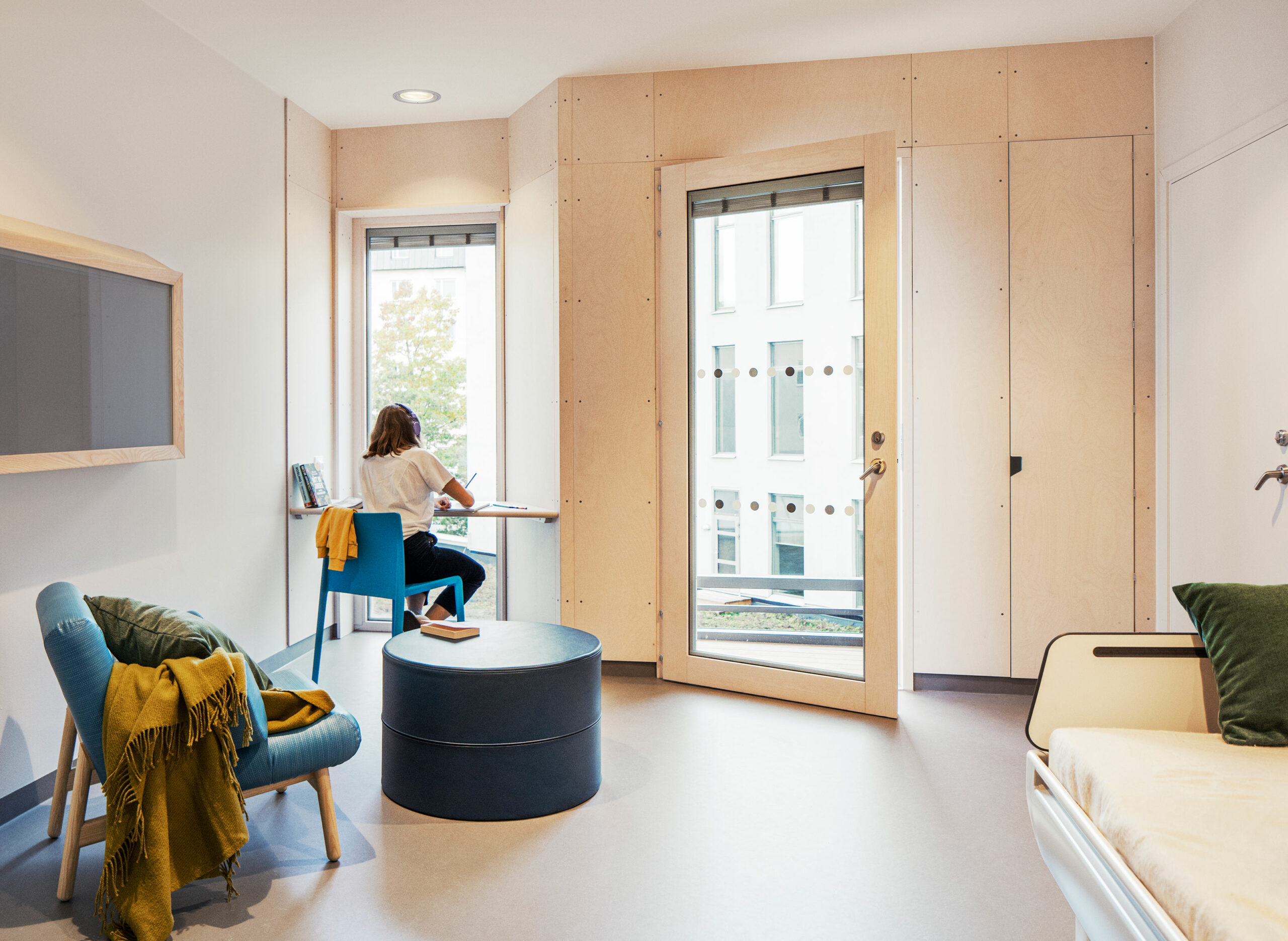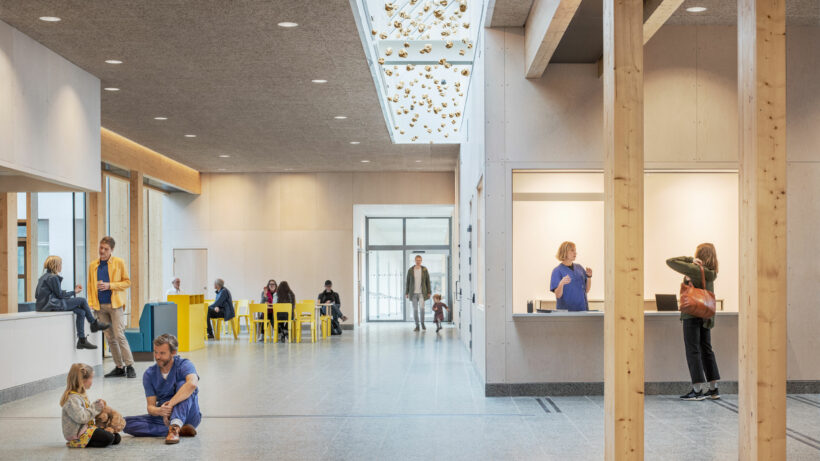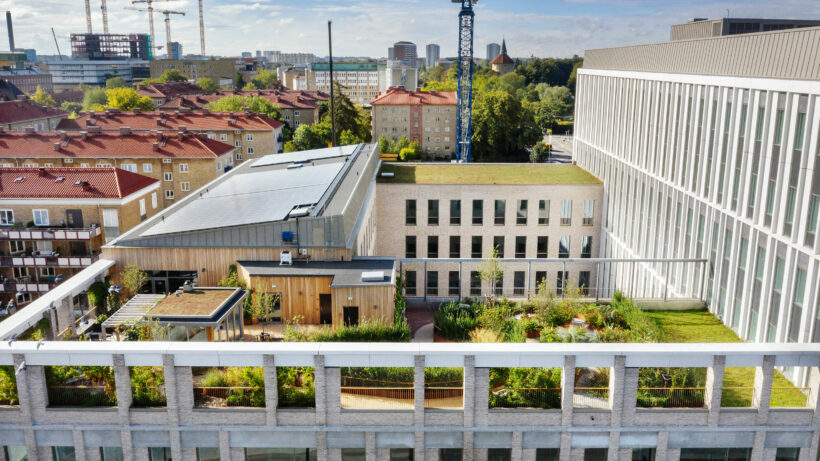Even though many people are affected by mental health problems, there is a stubborn stigma attached to all types of psychiatric healthcare and patients. A stigma that causes shame, prevents people from seeking help and renders recovery more difficult. Reducing the stigmatisation of mental health is therefore a high priority in healthcare.
The role of architecture
Psychiatric care environments have long been characterised by a strict emphasis on safety, and visual and pleasant values have been made to take a back seat. Psychiatry has – with the best of intentions– been hidden from public spaces and shared spaces. No doubt popular cultural depictions of psychiatric healthcare have contributed to the image of stereotypical patients in bleak, sterile, confined settings. But shouldn’t the awareness that environments contribute to our well-being and promote recovery apply to psychiatric patients too? And can architecture help to reduce the stigma and prejudice?
“Indeed it can. For some time now there has been a healthy questioning of traditional psychiatric care environments. Swedish and international research shows that the care environment can be a key component of treatment in psychiatric healthcare,” says Cristiana Caira, Lead Architect at White.


